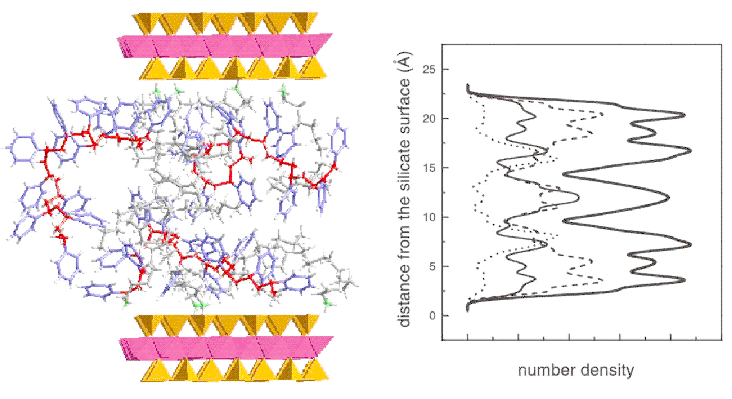|
|
Fluids in confined between walls only nanometers apart exhibit remarkable dynamical heterogeneities on length scales as short as a few Angstroms, though few experimental probes are available which test the origins of these heterogeneities on a microscopic scale. Our recent experiments combine nuclear magnetic resonance spectroscopy and molecular dynamics simulations to study the trilayer system formed when poly(styrene) (PS) is intercalated into a surface-modified fluorohectorite. PS in the center of the nanopores--where the density is low--is more mobile than the bulk, while chain segments which interact with the surface are dynamically inhibited. As a result, the transition between the glassy polymer and the melt takes place over an unusually broad temperature range (> 100 K wide).
Research team: D. B. Zax, D.-K. Yang, R. A. Santos, H. Hegemann, E. P. Giannelis, and E. Manias

[Figure 1]
(left) Simulation snapshot from MD simulation of silicate-surfactant-PS nanocomposite system, which gives the atomistic picture of the various system components. (right) The corresponding number density of Carbon atoms as a function of distance offset from the lower confining silicate surface. The dotted line corresponds to the polymer backbone, the dashed to the polymer phenyls, the thin solid line to the alkyl-ammonium surfactant, and the thicker solid line to the total.